Video: Pat Mulroy at the 2012 WaterSmart Innovations Conference
Patricia Mulroy, general manager of the Las Vegas Valley Water District and the Southern Nevada Water Authority, addresses the 5th Annual WaterSmart Innovations Conference.
Good morning everyone. Bright and early 7:30; everyone’s had their coffee, I hope.
Every year I have the opportunity to come and speak to you and say thank you. You know, you guys do an absolutely incredible job, and I’m not so sure you fully appreciate the impact that you have and the degree to which other communities are looking to the work that you have done. Where else has a community gone from being labeled the biggest water waster in the continental United States to being able to say we turned a corner, and we now can proudly say that our water footprint is 75 gallons per person per day. Take pride in that — you led the way, and you made it happen. I want to give you a big round of applause.
You know, in my role with the national organizations, I have an opportunity to travel all around the country and tell people the story of Las Vegas. I was recently in Austin, Texas, which has its own challenges and is in the middle of its own drought experience, and I shared with them the story of Las Vegas’ conservation journey and how we had systematically turned the corner. And the one big question I got from the audience at the end of that was, “How did you do it?” And it gave me an opportunity to say, “You know, I’m not going to take credit for it. The credit belongs to the most vital and enthusiastic business community anybody has had the opportunity to work with. People truly care about their community who see a problem and don’t wring their hands, but look for solutions.” So I told them the story of the conservation coalition, and I told them the story of a business community and a community at large that faced up to the challenges of living in the driest spot in the United States and how they conquered it. And how they have developed a culture of being ever diligent and respecting that resource.
Increasingly, as you travel around the country, the story of water becomes more pronounced. We were the invisible utility, you know — we built all this infrastructure, and then we buried it. And everybody in the country assumed that all they had to do was go to their tap, and fresh safe drinking water in whatever amount they wanted to use for whatever purposes, as long as they could pay for it, was going to come out of that tap. That reality is changing, and one of the most amazing phenomenon to me is that business communities around the country are beginning to connect the dots. They are beginning to understand that water isn’t this obtuse, technical, difficult-to-understand commodity or resource over here, but that it is a foundational part of any community and of any economic prosperity and economic success.
I’ve shared with you the story how water now is in the top three issues that are viewed by investors when they want to make a decision about whether to invest in southern Nevada. It is considered one of our points of vulnerability. Why? And it’s purely location. We sit on the shores of Lake Mead. It takes some research for the street to figure out that southern California is as dependent on Lake Mead as southern Nevada. Or that Phoenix, Arizona, is as dependent on Lake Mead as southern Nevada, because it’s not within the same geographic proximity. For us, it’s very visual and its very there, and so — for the last 12 years, as we have buffeted against the consequences of something we didn’t cause, something we can’t change, something we’re going to have to adapt to — as we have made this journey, we have constantly had to say we recognize it, we have taken it on, and we are changing our ways and recognizing that this is forever an issue that we’re going to have to deal with.
Increasingly, those that would want to deny that there is a change in the global climate are becoming fewer and quieter. All you have to do is look at the melting of the Arctic ice. All you have to do is look around at the extreme weather patterns that are becoming more pronounced around the planet. And, you have to say, something’s different. And one conversation that’s increasingly happening as we argue over how to mitigate the damage [is that] we have to adapt. The next 50, 60 years, no matter what we do, we’re going to have to adapt. And. unfortunately. we live in one of those places that are a bull’s eye and a very recognizable place where the changes are occurring.
The work that you’re doing is absolutely amazing, and it is so important. Conservation is a journey, and it’s a cultural change, and without your help, without a [sic] active and vibrant business community — that no matter how tough the economy got, continued to push through with the message — we never would have gotten there. It’s all because of the work that you do, and some of the work you do in some of the poorer neighborhoods of southern Nevada: as you’re working in Sherman Gardens, and working with the Metropolitan Police Department, and you’re working to revitalize and change that place, and, at the same time, give them some pride in their sustainability efforts. I can do nothing but commend you.
I thought I’d take this opportunity this morning to share with you some of the news you’ll be seeing coming out of the next several months. Give you a little sneak peek on some of the breaking news that will dominate the headlines. It will allow you to start thinking about it and start strategizing with us on how to deal with some of those messages as they come out and some of the positive things that we’ve been doing to try to promote and move our conservation efforts and our water management efforts to the next level.
Probably one of the most exciting things that we’re doing right now is we have entered [into] a partnership with Mekorot. Mekorot is the national water wholesaler for the country of Israel. If there is any place on the planet that shares the same challenges that we do, it’s the country of Israel — they have the same drought conditions, they have the same vibrant cities that are growing up in their areas, and they too have water as one of the biggest challenges. And so we formed a series of four teams. I have sent delegations and staff to Israel to spend two to three weeks over there working with them, and they have sent delegations and staff over here. We’ve created secure Web sites, over which joint research is conducted and data is shared.
And one of the key challenges and one of the key efforts that we’re jointly working on is, “How do we grow more food with less water?” All of us who live in the Colorado [River] community know that 80 to 85 percent of all the water goes to agricultural production. But there is a triangle: water, food, energy. Those three cannot be separated from one anothe,r and one of the keys if food. We can’t just wipe out agricultural districts in the Colorado River Basin, but what technology can we bring to bear? What can we learn from the Israelis, who have, in the Negev, been able to build a vibrant agricultural area with $US 1 billion worth of agricultural exports every year, using a fraction of the water that we use here in the Colorado River Basin? What is it we can learn from them? To me, that is a game changer, and it is one of the big challenges moving forward.
Since I have started speaking about the Colorado River, let me jump right in to two things that have been consuming most of our time. As you know, in 2007, after some very ugly and contentious discussions, the seven states signed an agreement whereby we made some historic and fundamental changes on how we inter-react with one another and how we jointly manage that river system. But there was one partner missing and that partner was the country of Mexico. In accordance with the 1944 treaty, we are obliged to deliver to Mexico 1.5 million acre-feet a year — there is a very squishy proviso in the treaty that says that under extraordinary drought conditions that amount can be reduced, but I challenge even the smartest lawyers in this room: define “extraordinary” drought. That is a definition nobody wants to have to tackle.
We are far better off entering into an agreement with our neighbors to the south and making them a full partner in a joint-management system of the river, allowing them to enjoy both benefits and having them share in the challenges. These discussion have been going on well over two years, and, I have to tell you, it’s been a roller coaster ride. It is obviously in the backdrop of all the other binational issues that tend to emerge: immigration, jobs, all those other issues that sit as a backdrop. But I think we are very very close to being able to craft something which will bring Mexico to the table, allow them to share in some of these benefits, but also to bring them to the table when we go into shortage.
We were very, very lucky last year. We had an extraordinary — and I don’t mean the year we’re still in — in 2011, we had a phenomenal water year. And guess what happened? We all thought the drought was over. I can’t tell you how many times I had to justify why we were continuing to build the third intake, because everyone thought it was over. Well, we went from an extremely wet year to one of the driest years on record: 42 percent of normal runoff, that’s all we got. So everything we gained in 2011 is gone and then some. We’re right back where we started. If that’s not a wake-up call, I don’t know what is. We can’t get complacent. And just because there is one wet year — which, what? It brought the reservoirs back to 40 percent full? — doesn’t mean we’re out of the woods.
In December, the Colorado River Basin study will be released by the Secretary of the Interior. It is a project that the seven states have funded in concert with the federal government, which we’ve co-managed with the federal government, pretty much on the model of how we resource plan in southern Nevada. Those of you who have been here for a while know that every single year we look out 50years. We say, “What’s changed? What has changed hydrologically, what has changed economically, what has changed in our usage patterns?” That changes our water resource picture and forces us to amend it 50years out into the future. And that 50-year resource plan is submitted to the state engineer; it is the basis upon which he signs all subdivision maps; it is attached to every SEC filing; and it is attached to every bond filing. That’s how important that resource plan is.
So, with that same planning principle in mind, the state said we need to take a step back and do a reality check. We need to look at various hydrologic possibilities in the Colorado River Basin — everything from the traditional normal hydrology to what do the climate models show that is possible in this river system? And there is a band of possibilities, and I’m delighted to see a band of possibilities rather than that one probability which you can take to the bank [that] will be wrong. Within that band of possibilities, demands were overlayed. What do the Upper Basin states, who are not fully utilizing their entitlement, how do they see themselves growing into their entitlement? And how do the Lower Basin states see themselves managing their water use and their economic prosperity within their limited water resources?
There will be a mosaic of possible solutions, of alternatives that we have to look at, of alternatives we have to examine. Foundational to all of those is changing the way we use water, whether it’s in urban settings, whether it’s in agricultural settings — it’s becoming not more miserly, it’s becoming smarter, it’s availing ourselves of the technology that seems to change daily and evolving into areas we never thought possible.
This basin study will be headlines all over the country, because the news is not good. The news on how many times this basin will go into shortages will be devastating. And it will send shock waves. The only protection we have, as a community, is that we saw it coming. You saw it coming, you stepped up to the plate, and we began to change. There is no hydrologic answer, there is only a proactive answer. The seven states right now are cobbling together and negotiating a memorandum of understanding of how we are going to respond to what science and reality check show us is the reality of the water supply within this basin.
It opens the door to even more difficult discussions, to even greater challenges, but, as a basin, those of us who live in this basin don’t have an appreciation of how much farther ahead we are from other watersheds across the country, where there is still acrimony and there is still the belief that there are winners and there are losers. We forged a partnership — yes it may have been a shotgun marriage, but it is still a marriage that is working. And it has avoided crisis, and it has kept us out of court, and it has allowed us to face and continue to prosper despite the challenges that we faced.
In the short time that I have been in this job, we have doubled the population — twice. We had to add $US 2.5 billion dollars worth of infrastructure just to accommodate the economic growth and the population growth that occurred in this community. During the ’90s and the first decade of this century, this community grew up, and it became a major metropolitan community in the United States. And, in partnership between those of us in charge of building the facilities and managing the resources and a community that understood those challenges, we did it without a hiccup. That’s a pretty amazing story, and one that is now being told everywhere.
Our challenge moving forward will continue to be there, but we are in so much better shape as a basin and as a community. There are places as this drought in the Midwest has begun to emerge — and I won’t name names — but there are communities that sit next to Great Lakes who refuse to hook communities 20 miles away into their limitless supply. Amazing. That couldn’t happen in the Colorado River Basin. That is such a nonsequitur to us. How do you allow one community to watch their wells go dry, not be able to get through, their crops died, but you’re hoarding and refusing to share something that you have in limitless supply? Interesting proposition.
Our Arizona water bank has 600,000 acre-feet in it. We just inked a new arrangement with Metropolitan, given the tough economic times, our new arrangement with Metropolitan has no exchange of money. We will take the evaporative losses that will accrue, while they store our conserved water, and we’ll get it back having spent our evaporative losses which we should take, and we will get it back when we need it. We have a lot of tools in our toolbox now to get through even the worst of droughts.
I’m happy to tell you that our third intake is coming along nicely — yeah we’ve had some speed bumps along the way, but when you’re talking about the most difficult construction project in the United States, I’m not surprised. But there is an amazing crew out there, working seven days a week, 24 hours a day, boring that tunnel. The intake structure is anchored at the bottom of Lake Mead, and the work is proceeding. In 2014, we will be able to flip the switch and give southern Nevada that last piece of Lake Mead reliability that they need.
Many people in this state are not happy with our in-state project. You will have a different appreciation for the significance of this in-state project when you see that basin study come out and you see the number of times this system will go into shortage over the next 50 to 60 years. It is our safety net, and, in the absence of an alternative that meets and protects this community, there is no alternative. Desalting won’t work; we can’t conserve our way through it; we have to diversify where our water comes from — that diversification is key.
I was extremely happy to see that our test pumping in Coyote Springs had no impact on the Moapa dace [a rare cyprinid fish of southern Nevada]. We’re in court because we’re going to kill the dace, but the numbers have gone up. We have forged enough of a partnership with U.S. Fish and Wildlife, we have managed habitat, we are protecting the species, and we have proven that groundwater can safely be developed and not jeopardize and kill off old, prehistoric species — it can be done.
The basin study, as ugly as it is, I see every challenge as an opportunity, and I think it will be an enormous opportunity for this basin to move to yet the next level. A much more fluid system, a much tighter partnership, a much greater recognition that there can’t be winners and losers, that we are all in this together. So, as the national media and as the country as a whole recognizes how we as a community have gone from being the world’s greatest water wasters to being the most sustainable and the most proactive water conservation community in the United States, I want to end by again saying thank you — those that pioneered this organization, those in the business community, the Tom Wardens, the Irene Porters, that saw how critically important it is for this community to come together.
No matter how many other things divide us — and we can argue over just about anything these days — we put all those differences aside.
Yes, right now we’re struggling with the consequences of the economic fallout, the fact that connection charges aren’t coming in, and costs that previously were covered by the connection charges have to be absorbed differently. It breaks my heart; it makes my stomach turn; it is ugly, and there are a lot of people who are very very unhappy with us, and I don’t blame them. There are no good answers. I have to be very frank with you: we have a mortgage payment that could kill a horse. We have $2.5 billion in growth infrastructure that we’re paying for, and we added another $US 800 million in order to protect ourselves.
Anybody see the USA Today front page story on Saturday? Water prices across the country are skyrocketing. Be grateful that there is one thing in this community, one problem that you don’t have, and that’s decaying infrastructure that has been ignored. You go into New York City, you go into Boston, you go into Chicago, Louisville, you go into any of these Eastern cities, and they have trillions of dollars of capital demand when you combine all that have to be met. They took the money from their water revenue, and they stuck it in their general fund, and they paid for all kinds of things with it — they didn’t re-invest. Anyone who is in business knows you have to reinvest in your capital assets, and you have to keep them alive. Everything has a lifespan.
That, at least, is one thing we don’t have — we don’t have a single federal nickel in our system. We paid for this, and that is a daunting challenge for a community of 2 million. We are going to reexamine how those costs were assigned. At the end of the day, people might not be happy about it, but, if there is one thing that I hope will come out of the whole re-examination of our financial challenges, it’s that people believe that everybody is paying their fair share; that no one has had their costs offloaded onto somebody else; that there is rhyme or reason to the way the costs have been assigned. That is our most immediate challenge, and one I had to address before closing out.
But we’re not alone. Go back and read that USA Today story about Philadelphia and San Francisco and Chicago and the other cities in the United States where water rates are skyrocketing — we have our challenges, but we’re not alone. We have lots of other communities that are in the same boat that we are. But we are ahead of them in one significant way: we are further along of converting a community from a 20th-century community into a 21st-century community, thanks in very large measure to your efforts.
And so, with that, I say thank you, again.
I can’t tell you how much we appreciate everything that you do: the time you put in; the dedication you show; the efforts, the money you put into it — thank you, it has shown huge dividends. And, as you travel around the country, engage your friends in conversations about where they are on the journey and share with them the importance of an actively engaged business community.
Residents look to you as an example. If business leads, the rest will follow — I have always believed that, and you have proven that that is true, so thank you. again. from the very bottom of my heart.
is an editorial intern for Circle of Blue based out of Traverse City, Michigan. She holds a BA in International Relations from Michigan State University’s James Madison College. Her interests include water pricing, environmental economics and policy, and conflict mediation.

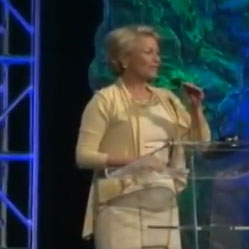

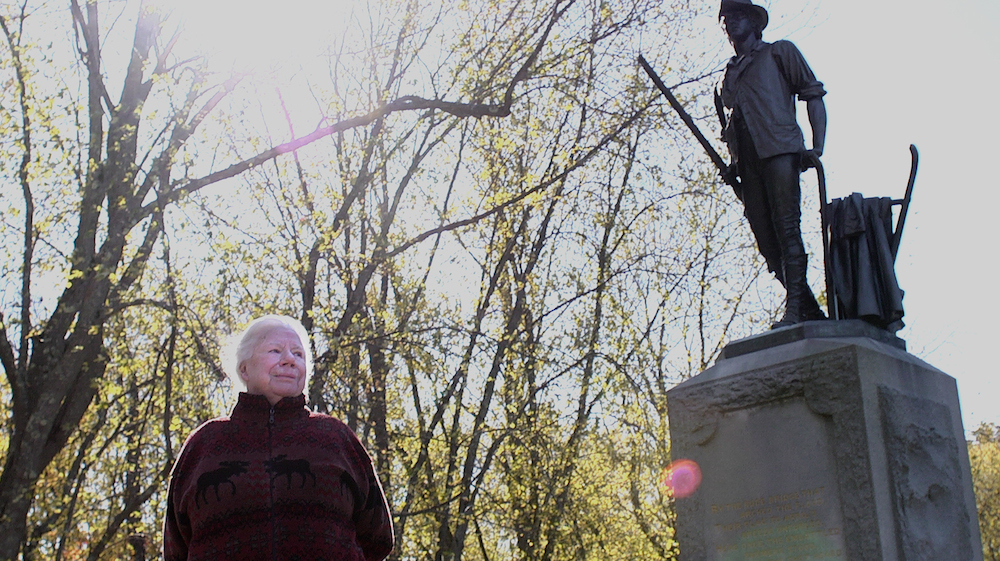
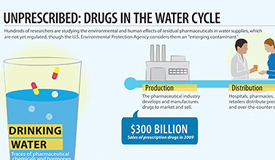
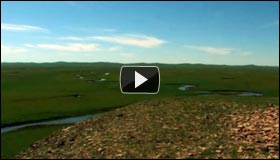

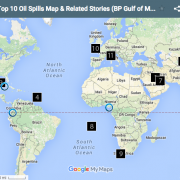


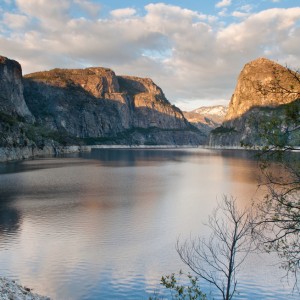
Leave a Reply
Want to join the discussion?Feel free to contribute!